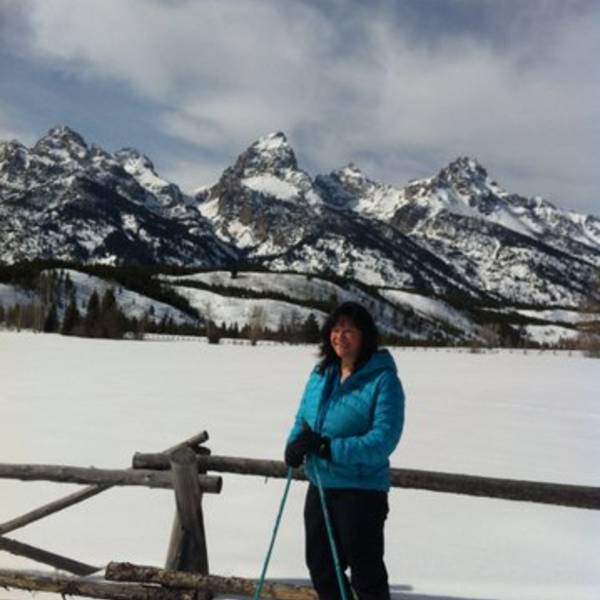Volunteers have worked for months to help the country's fastest mammal avoid a fatal problem: miles of fencing blocking their migration routes.
Several years ago, I was driving along a snaking bend of State Highway 22 that bisects Jackson Hole, Wyoming, and encountered the body of massive bull elk hanging from a fence that paralleled the road, its back legs hamstrung by four unyielding strands of barbed wire. His antlers were partially buried in a deep, windswept trough of snow and his lifeless eyes fixed on some distant point on the horizon. I wondered how long he had been hanging there.
Since that time, I have become more aware of man’s heavy hand on the landscape, and a deep desire has grown in my heart to change things—really fix the problems, beyond the ebb and flow of politics. Last year, Nature Valley generously granted my wish.
In partnership with Nature Valley, Grand Teton National Park, the Pinto Ranch, and the Jackson Hole Wildlife Foundation, NPCA embarked on an ambitious fence-modification project to allow pronghorn, bison, and elk safe passage into the park. The eastern boundary of Grand Teton was historically used for cattle grazing since the late 1800s, and many of these fences still stand in various stages of disrepair and pose a serious hazard to migrating animals. Often, the park simply does not have the budget to remove them. That’s why NPCA works so hard to provide support to parks like Grand Teton, whose maintenance backlog is nearing $900 million, and why we also work literally on the ground with partners like Nature Valley to help preserve the large landscapes that sustain so many wildlife species.
Grand Teton still permits some cattle grazing in the park—a grandfathered use from its historic ranching past. The fences in the North Elk Ranch allotment have been kept in good condition, but still block wildlife movement in the northern part of the park, where many species of animals migrate through. In the spring, we met with the manager of the Pinto Ranch to discuss how to make the fences in this area safer for wildlife, while still providing a reliable enclosure for his cows. We collectively agreed upon a modification of a five-mile fence that would raise the bottom wire to allow pronghorn to crawl under it, and then add a top rail to prevent wildlife from becoming ensnared as they jumped the fence. In the fall, 25 dedicated volunteers headed out to the problem fence, armed with an arsenal of tools. Together we broke the hold of those tenacious hooked strands and restrung the fence, as bison and pronghorn grazed nearby. The bison, being the curious creatures that they are, couldn’t resist a closer look and came to survey the unusual activity on their range.
Our volunteers ranged from 20 to 70 years old, men and women alike, led by our fearless leaders Greg and Gretchen, whose vigilance and efficiency helped keep us moving forward. Volunteers flanked the fence and pulled hard to remove wire and retrieve staples from tenacious old wood posts. As I surveyed our group toiling under the blazing sun, we more closely resembled a chain gang than a bunch of environmental do-gooders. It struck me that these people weren’t policy makers or activists; they were just regular folks out there trying to do something—or, more accurately, fix something. We fixed a lot of fence that day, and as the sun waned, we stood admiring our handiwork: the same sturdy posts, but now, without the harmful bottom wire.
Just as we were ready to hang up our gloves for the day, hauling big unwieldy loops of barbed wire into the back of the pick-up, I noticed a single pronghorn buck approach to within fifteen feet of where I stood. He sauntered over to the fence, contemplating what had changed, and nervously paced back and forth. In one sudden movement, he ducked his graceful horns in the newly cleared space, slipped under the fence, and headed to the nearby irrigation ditch for a drink. It took this intelligent creature less than ten minutes to realize that the obstacle that had been in place for decades was now gone, and to take advantage of our work.
There are some things in life that go beyond words, and I took this as a thank you of the highest order.
About the author
-
 Sharon Mader Former Senior Program Manager
Sharon Mader Former Senior Program ManagerSharon worked in the Northern Rockies region from 2007 to 2023, advocating for the protection of Grand Teton’s outstanding natural and historic resources, and promoting NPCA’s national strategic priorities in Wyoming.
-
General
-
- NPCA Region:
- Northern Rockies
-
Issues


